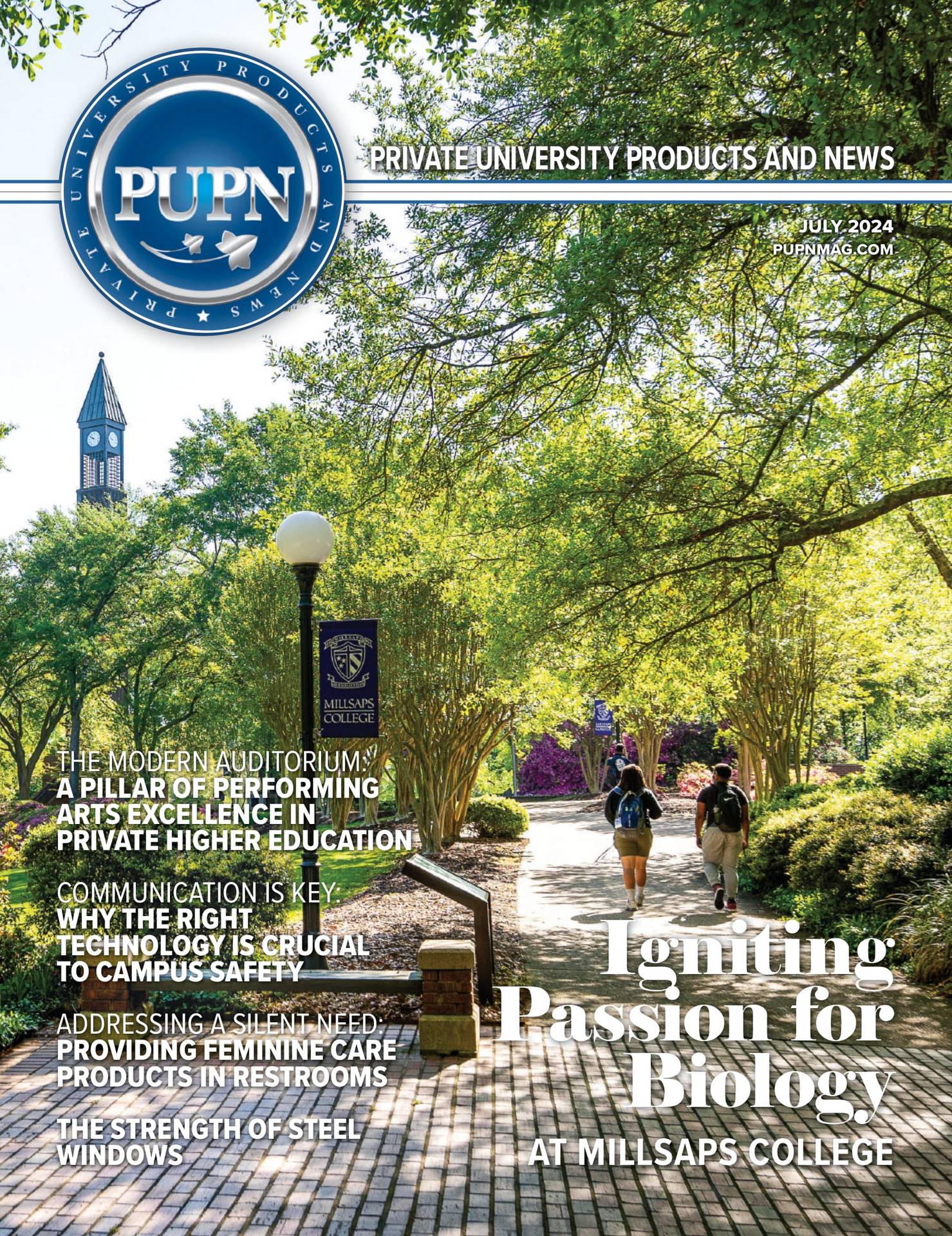Private colleges and universities face unique challenges to provide safe, uplifting places for students and staff to thrive. The pandemic era has placed a new emphasis on managing environmental conditions and offering safeguards that ensure health safety and reduce absenteeism. These objectives are complicated by rising costs, tight labor markets, and supply chain complications.
University decision-makers should consider several effective strategies to achieve a better university environment. Here are four metrics to consider:
Mitigation
The first solution in providing better health and wellness is the integration of active air and surface purification systems across the entire facility. Active air and surface technology operates constantly, improving indoor air quality by removing pathogens and reducing odors and sanitizing surfaces. Optimal systems include multiple technologies, including photocatalytic oxidation, bi-polar ionization, and filtration. The best systems adapt to all parts of the university, including devices that can operate inside the HVAC system, along with freestanding and mountable devices.
Treatment areas include dorms, classrooms, administrative offices, food service, athletics facilities, and transportation. This widespread treatment provides continuity of control across the entire university landscape, thus protecting students, faculty, and staff from harmful contaminants. HVAC systems should be cleaned and sanitized prior to the installation of the air and surface purification system. This pre-installation cleaning, along with regular preventative maintenance, ensures the best possible indoor air quality and optimal system performance.
Optimization
The objective of facility optimization is seeking a comprehensive set of solutions to increase the performance of the facility by reducing operational costs, extending the life of the equipment, and providing more sustainable outcomes. The key areas in this effort are enhancing the performance of the HVAC system, reducing overall energy consumption, and conserving water usage. Collectively, these strategies use targeted technology that can reduce operational costs by up to 50% and lead to improved sustainability.
Verification
University administrators can monitor the systems and be sure these strategies are working by utilizing several technologies. Maintenance personnel must be to be able to measure indoor air quality in real time; such on-demand information provides the prime indication of the general environmental conditions inside the university. The preferred IAQ monitoring system measures the important metrics that determine overall air quality in real time. These metrics include measurements for the following:
• Fine Particulate Matter: this measurement detects harmful pathogens and allergens, including COVID-19.
• Volatile Organic Compounds: These compounds can cause breathing problem.
• Carbon dioxide: C02 levels at or above 1,000 parts per million equate to a 10%-20% increase in sick days.
• Humidity: Healthy humidity levels can reduce the spread of viruses. At 23% relative humidity, more than 70% of the flu virus particles can cause infections. This percentage drops to 14% at 43% relative humidity.
• Temperature: Temperature affects the comfort level of students, faculty, and staff.
Indoor air quality monitors should also integrate with any building management system. A good IAQ monitor can also alert maintenance personnel to problems or abnormalities which need to be addressed in other areas of the facility, such as HVAC. These monitors are essential tools in determining the health of the facility and whether the equipment is operating properly.
Implementation
One of the primary objectives of optimization is to offset the costs of implementing innovative solutions that result in better environmental conditions. These optimization efforts include air and surface purification systems and upgrades to the HVAC system. The cost savings derived from optimization should ideally be reinvested back into the facility. The amount of savings that can be found are directly related to local energy and water costs in the market. Higher utility costs equal a higher level of savings. Most of the solutions can be installed by current facility staff or contractors that currently service the facility.
There are many creative ways to pay for these improvements, including fee-based programs that offer a monthly fee paid by the university; in some cases, these fees are lower than current energy costs. Such programs eliminate a capital expense, allowing the university to deploy capital to the core mission of education. In this type of program, the benefits are immediate in both improved facility conditions and lower costs.
Universities that implement the strategies outlines above can expect some intangible benefits, including:
• Stronger student performance: Indoor air quality at universities and colleges has always been important, especially since it impacts alertness and cognition. Indoor air quality has a direct relationship on student performance.
• Competitive Advantage: Universities that adopt these measures show students, family, and alumni that they are serious about providing the safest, most productive environment possible. Such initiatives could be a deciding factor in students selecting a university.
• Environmental Leadership: A higher level of responsibility, shown through employing more sustainable solutions, demonstrates dedication to a lower carbon footprint.
Adopting A New Standard
Colleges and universities are places that develop the next generation of leaders; they are also repositories for great ideas and new solutions. Institutions of higher education are often on the leading edge of change, pioneering concepts that shift paradigms. For these reasons, colleges and universities should be the first adopters of new standards that improve outcomes across the spectrum of health, economics, and sustainability.
Administrators and educational leaders have at their grasp a concept that can and will change the way university facilities are maintained and measured in the future.










